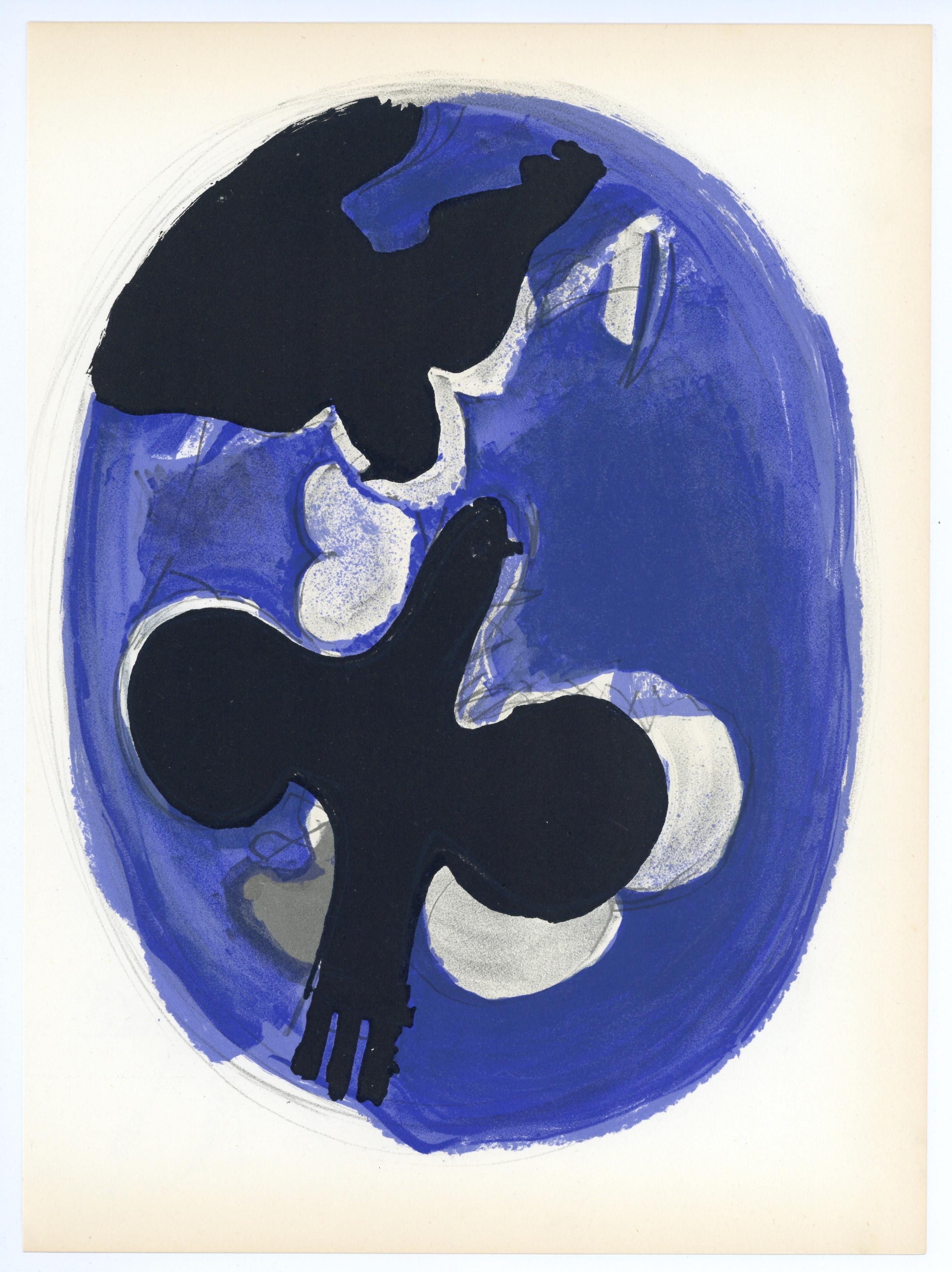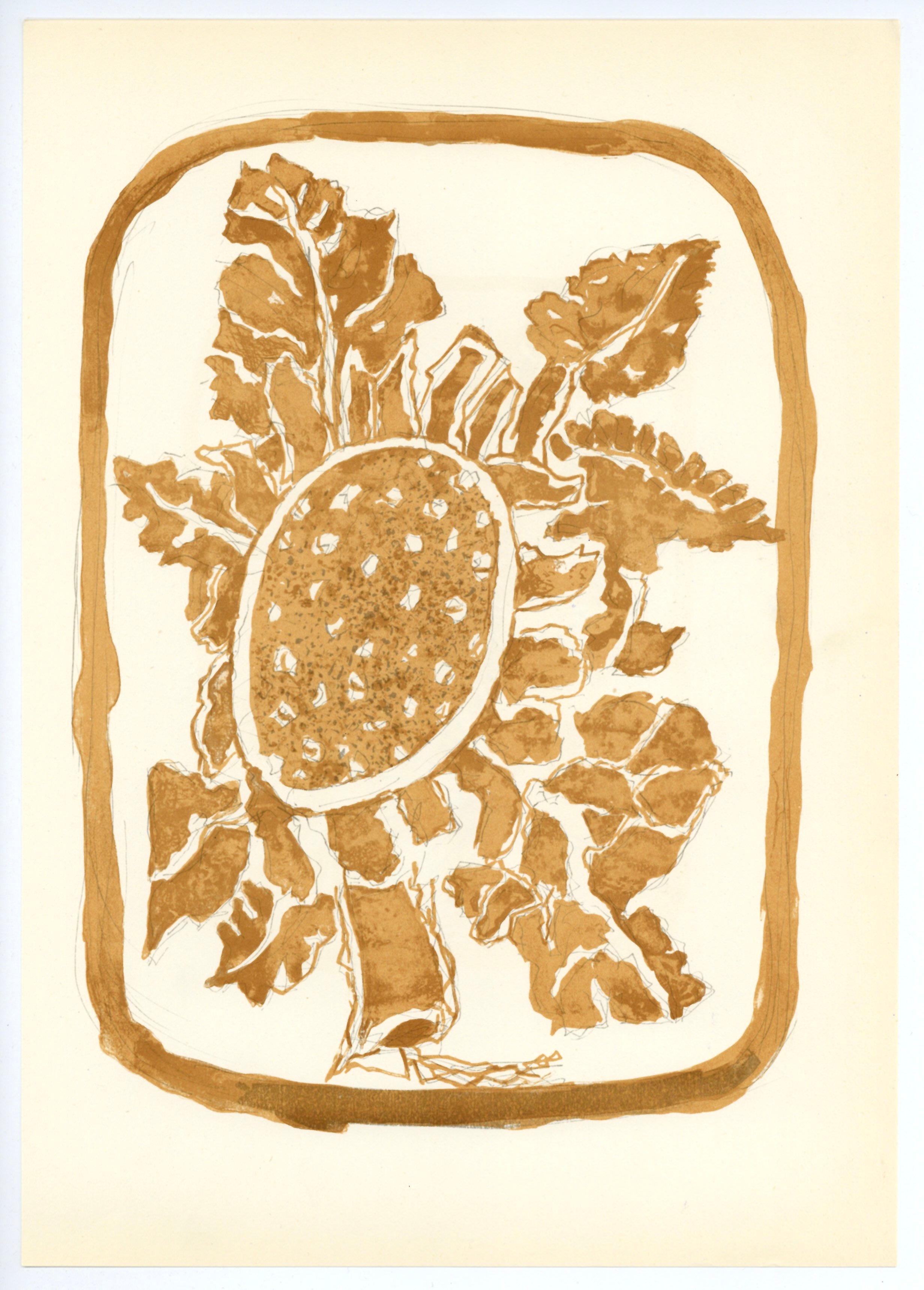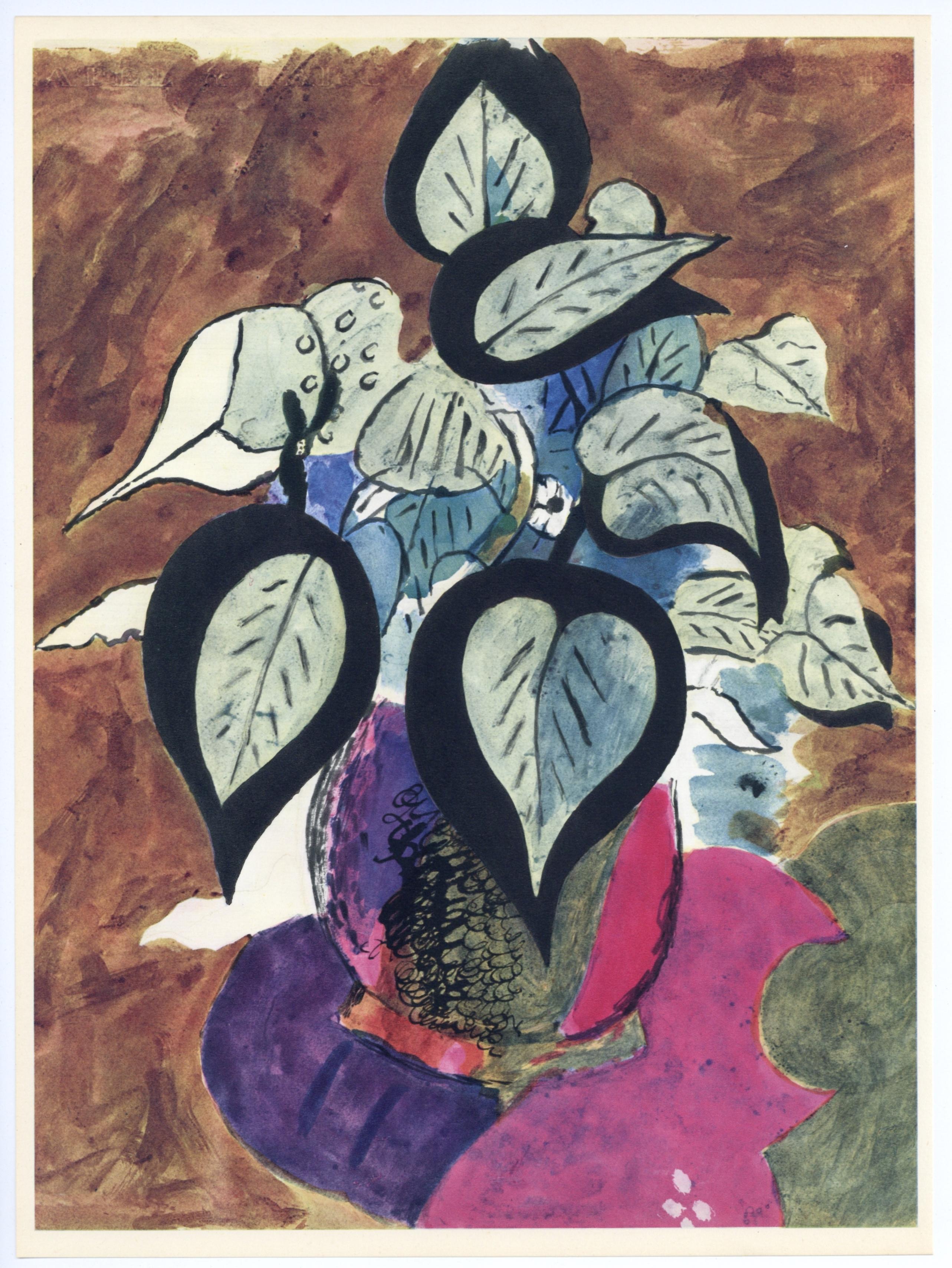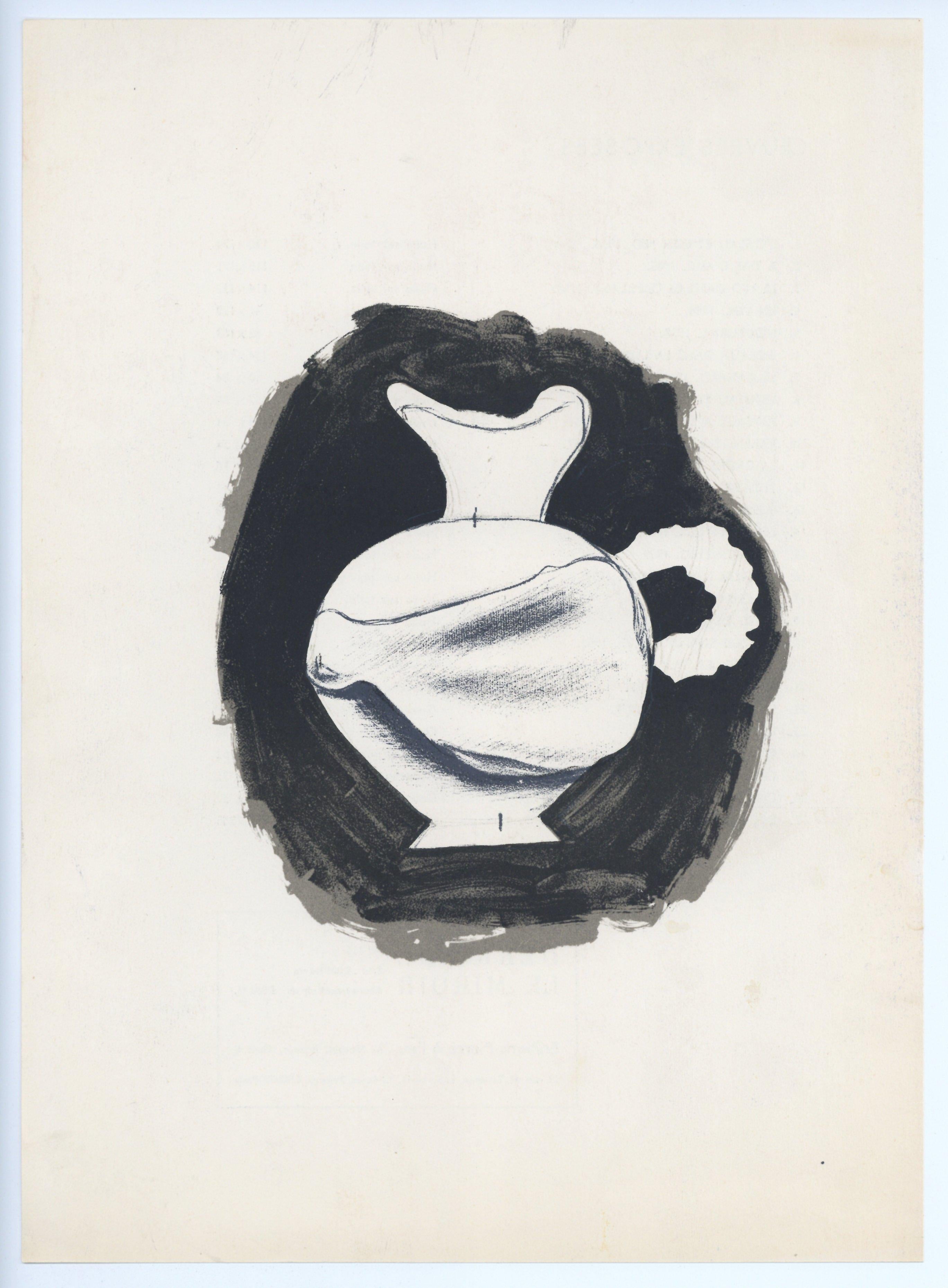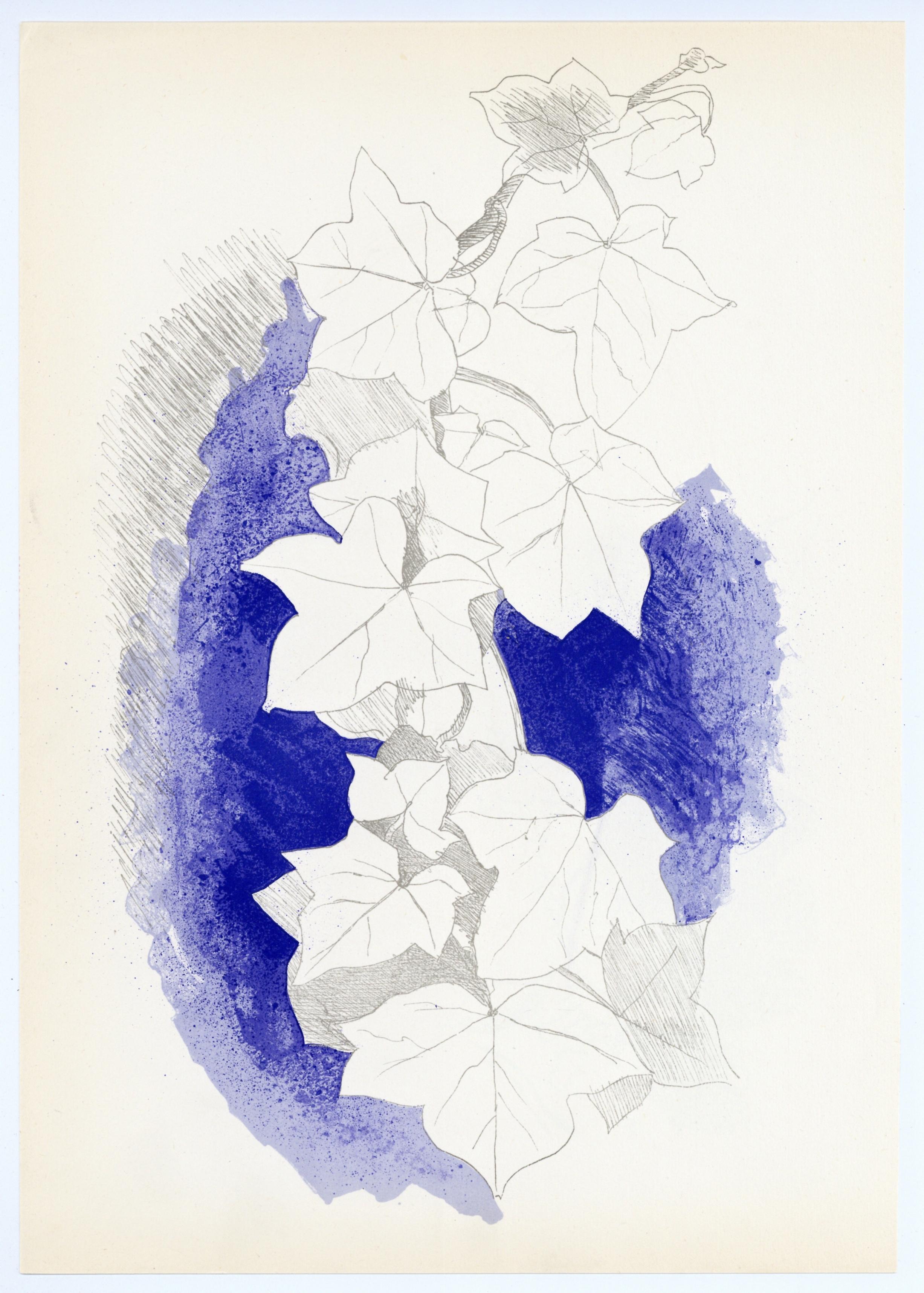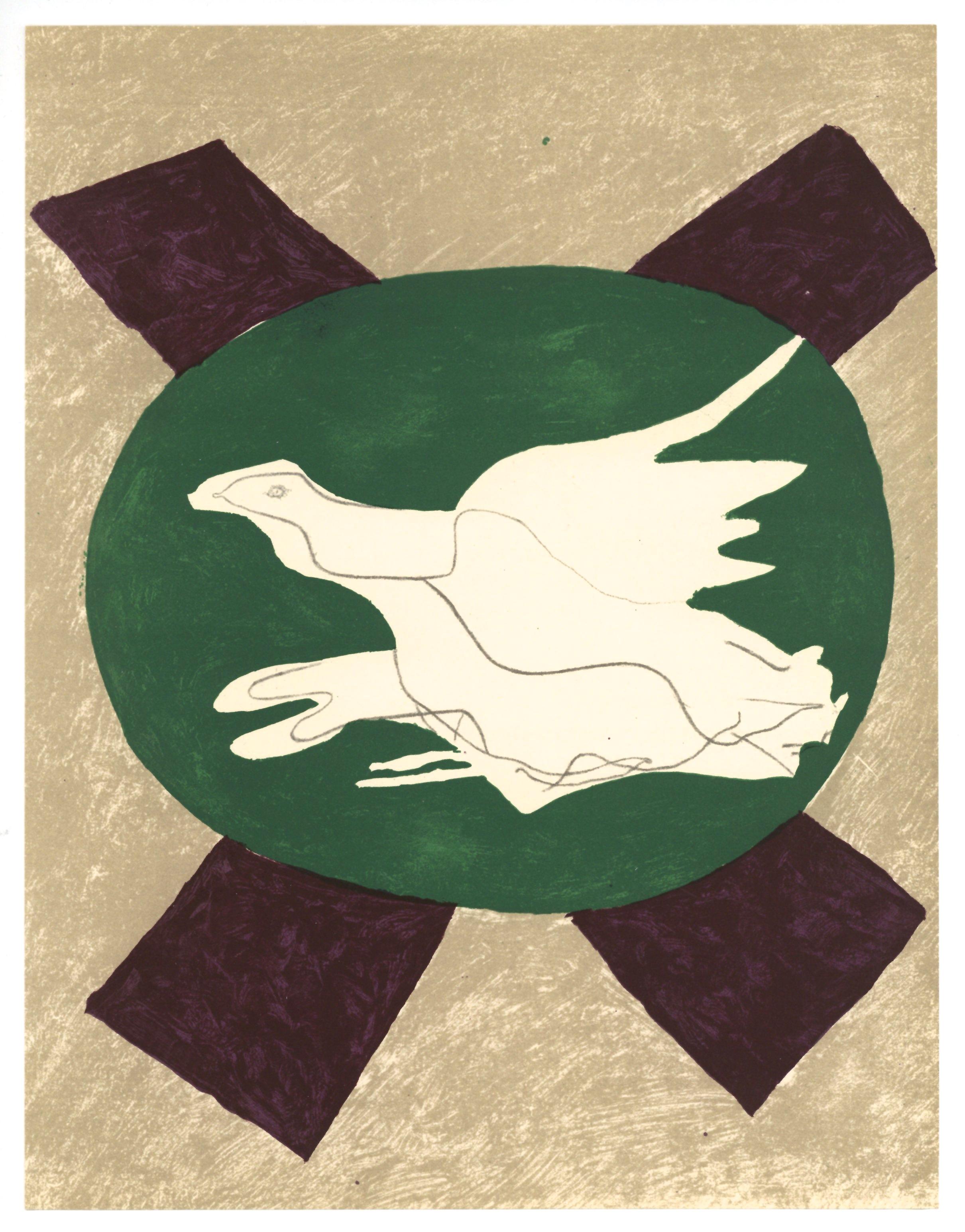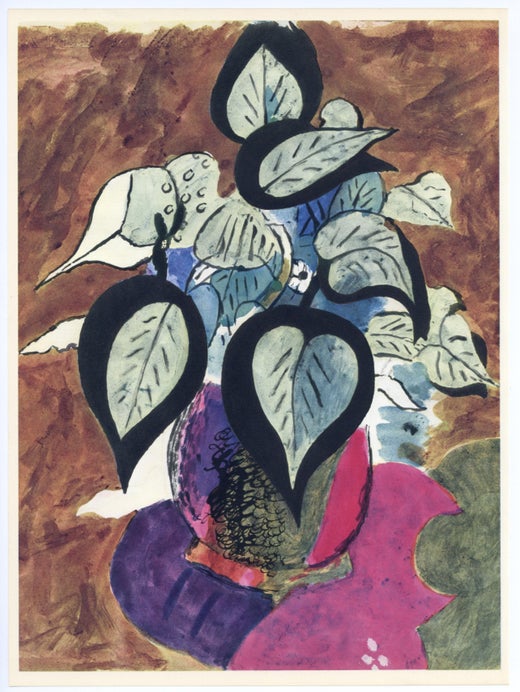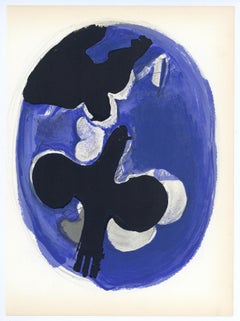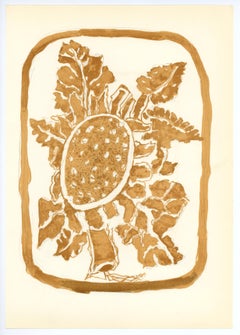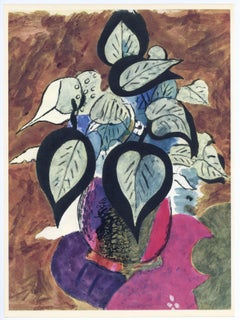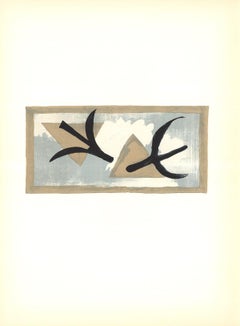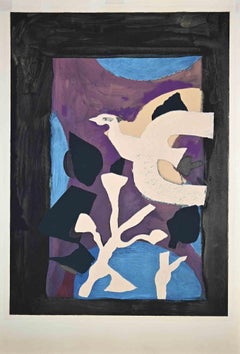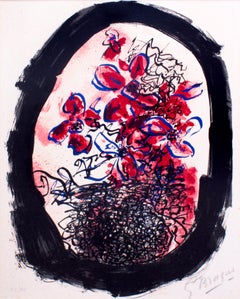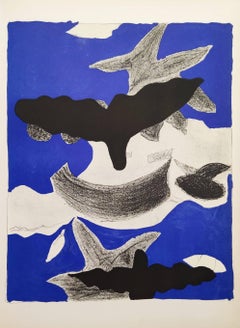Want more images or videos?
Request additional images or videos from the seller
1 of 5
(after) Georges Braquelithograph1955
1955
$150
£114.19
€130.54
CA$211.05
A$230.86
CHF 121.55
MX$2,756.19
NOK 1,549.20
SEK 1,417.15
DKK 975
About the Item
Medium: lithograph (after the watercolor sketch). Printed in 1955 at the Mourlot Freres atelier, this composition is from George Braque's Intimate Sketchbooks (Carnets Intimes). Braque had kept these drawings private, but finally consented to having them published by Teriade in 1955 for the art revue Verve (issue number 31-32). Size: 13 3/4 x 10 1/8 inches (348 x 257 mm). Not signed.
Condition: there is a repaired tear (10mm) in the margin to the right of the image.
- Creator:(after) Georges Braque (1882 - 1963, French)
- Creation Year:1955
- Dimensions:Height: 13.71 in (34.8 cm)Width: 10.12 in (25.7 cm)
- Medium:
- Period:
- Condition:Condition: there is a repaired tear (10mm) in the margin to the right of the image.
- Gallery Location:Henderson, NV
- Reference Number:1stDibs: LU2365216459222
(after) Georges Braque
Braque began his artistic career painting in a Fauvist style, strongly influenced by friends Raoul Dufy and Henri Matisse. In 1907, however, after befriending Pablo Picasso, Braque began focusing on Cubist compositions and a more muted color palette. He and Picasso would work closely until 1914 when Picasso began focusing on symbolism and portraiture, while Braque sought to explore “pure composition” void of meaning and symbolism. A 1922 exhibition at the Salon d’Automne in Paris launched Braque further into fame. He won several important prizes over the next few decades, including First Prize at the Carnegie International and the main prize for painting at the Venice Biennale. In 1961, Braque became the first living artist to ever have his work displayed at The Louvre. Throughout the 1930s and 40s, Braque created many works featuring Greek and Roman mythological imagery such as this print, though his hope was to use the images simply as visual objects stripped of their histories, lore, and symbolism.
About the Seller
5.0
Platinum Seller
Premium sellers with a 4.7+ rating and 24-hour response times
Established in 2006
1stDibs seller since 2023
591 sales on 1stDibs
Typical response time: 1 hour
- ShippingRetrieving quote...Shipping from: Henderson, NV
- Return Policy
More From This Seller
View Alllithograph
By (after) Georges Braque
Located in Henderson, NV
Medium: lithograph (after the watercolor sketch). Printed in 1955 at the Mourlot Freres atelier, this composition is from George Braque's Intimate Sketchbooks (Carnets Intimes). Braq...
Category
1950s Prints and Multiples
Materials
Lithograph
lithograph
By (after) Georges Braque
Located in Henderson, NV
Medium: lithograph (after the watercolor sketch). Printed in 1955 at the Mourlot Freres atelier, this composition is from George Braque's Intimate Sketchbooks (Carnets Intimes). Braq...
Category
1950s Prints and Multiples
Materials
Lithograph
lithograph
By (after) Georges Braque
Located in Henderson, NV
Medium: lithograph (after the watercolor sketch). Printed in 1955 at the Mourlot Freres atelier, this composition is from George Braque's Intimate Sketchbooks (Carnets Intimes). Braq...
Category
1950s Prints and Multiples
Materials
Lithograph
lithograph
By (after) Georges Braque
Located in Henderson, NV
Medium: lithograph (after the painting). Printed in 1959 for the art revue Derriere le Miroir (issue number 115) and published in Paris by Maeght. Sheet size: 15 x 10 3/4 inches (378...
Category
1950s Prints and Multiples
Materials
Lithograph
lithograph
By (after) Georges Braque
Located in Henderson, NV
Medium: lithograph (after the watercolor sketch). Printed in 1955 at the Mourlot Freres atelier, this composition is from George Braque's Intimate Sketchbooks (Carnets Intimes). Braq...
Category
1950s Prints and Multiples
Materials
Lithograph
original lithograph
By Georges Braque
Located in Henderson, NV
Medium: original lithograph. Printed in 1958 for the art revue XXe Siecle (issue number 11) and published in Paris by San Lazzaro. Sheet size: 12 3/8 x 9 1/2 inches (314 x 242 mm). N...
Category
1950s Prints and Multiples
Materials
Lithograph
You May Also Like
After Georges Braque 'En Vol'
By Georges Braque
Located in Brooklyn, NY
This is a first edition lithograph reproduction of Georges Braque's En Vol (In Flight), published in 1959 as part of Derrière le Miroir (DLM) No. 115. The lithograph is featured on p...
Category
1950s Cubist Prints and Multiples
Materials
Lithograph
$200 Sale Price
20% Off
Oiseaux - Lithograph after Georges Braque - Mid-20th Century
By (after) Georges Braque
Located in Roma, IT
Oiseaux is an lithograph realized by an anonymous artist after Georges Braque in the 20th Century.
Printed by Mourlot. Good conditions.
The artw...
Category
Mid-20th Century Cubist Figurative Prints
Materials
Lithograph
Frontispiece from Braque Lithographe - Lithograph 1961
By Georges Braque
Located in Roma, IT
Hand signed and numbered.
Edition of 125 prints.
Ref.: Catalogue D.Vallier pag.284
Passepartout included : 69 x 49 cm
Very good conditions.
Georges Braque
(Argenteuil, 1882 – Paris...
Category
1960s Modern Figurative Prints
Materials
Lithograph
Carnets intimes de Braque V
By George Braque
Located in OPOLE, PL
Georges Braque (1882-1963) - Carnets intimes de Braque V
Lithograph from 1955.
Dimensions of work: 35 x 26 cm
Publisher: Tériade, Paris.
The work is in Excellent condition.
Fast...
Category
1950s Surrealist More Prints
Materials
Lithograph
After Georges Braque - Antiborée - Lithograph
Located in Collonge Bellerive, Geneve, CH
Lithograph after Georges Braque.
Signed in the plate
Edition of 150
Dimensions: 76 x 117 cm
Bibliography:
« Les Métamorphoses de Braque» of Heger de Loewenfeld and Raphaël de Cuttoli , Editions FAC, Paris, 1989.
In 1961 Georges Braque decided with his laidary friend Heger de Loewenfeld to pick up certain of his works to in order to create artworks, this beautiful litograph is one of them.
Héméra in the Mythology:
In Greek mythology Hemera was the personification of day and one of the Greek primordial deities. She is the goddess of the daytime and, according to Hesiod, the daughter of Erebus and Nyx (the goddess of night). Hemera is remarked upon in Cicero's De Natura Deorum, where it is logically determined that Dies (Hemera) must be a god, if Uranus is a god. The poet Bacchylides states that Nyx and Chronos are the parents, but Hyginus in his preface to the Fabulae mentions Chaos as the mother/father and Nyx as her sister.
She was the female counterpart of her brother and consort, Aether (Light), but neither of them figured actively in myth or cult. Hyginus lists their children as Uranus, Gaia, and Thalassa (the primordial sea goddess), while Hesiod only lists Thalassa as their child.
The father of Cubism
Three Cubist that distinguishes art historian periods were initiated and developed by Georges Braque: The Cubist Cézanne (1907-1909), Executive (1909-1912) and synthetic (1912-1922).
Post-Impressionist and fawn, Braque no longer adheres to the contingency of a decorative way or the other. Cézanne’s paintings exhibited at the Grand Palais during the retrospective of 1907 are a revelation: Cézanne sought and invented a pictorial language. In his footsteps, Braque went to the South with the reasons of the Master. He returned with Estaque landscapes and surprising Ciotat it keeps Cezanne geometric model and retains the “passages” continuity from one surface to another to create the sensation of “turning around” of the object represented. But he wants to go after the consequences of the vision of Cezanne. In his paintings Houses in L’Estaque (1908) it simplifies the volumes of houses, neglects detail by removing doors and windows: the plastic rhythm that builds the table. Large Nude , a masterpiece of the period, can be considered the first work of Cézanne cubism .
Systematizing and deepening Braque discoveries open the door analytical cubism. In 1909, his painting became more cerebral than sensual. The pattern is recreated in the two-dimensionality of the canvas, leaving aside any illusionistic perspective. In Still Life with Violin, objects are analyzed facets according to their characteristic elements, each facet referring to a particular view of the object. There are so many facets of points selected view: Table reflects the knowledge of the object and the ubiquity of the eye. Moreover, Braque is looking for the essence of the objects in the world rather than their contingency, which explains the absence of light source and use of muted colors (gray, ocher), contingent aspects of the object . But formal logic has stepped facets, erased any anecdote to the object and ultimately led to his painting a hermetic more marked on the edge of abstraction (see the series of Castle Roche-Guyon ).
Braque, anxious to keep the concrete and refusing at all costs that the logic of Cubism takes the paintings to abstract, reintroduced signs of reality in his paintings in 1912 marks the beginning of Synthetic Cubism. Historians speak of “signs of real” rather than reality because what interests Braque, this is not to put reality into a table, but to create a painting which, by its language, refers to the real. To do this, he invented two major techniques XX th century inclusions and contributions. The inclusions consist of painting objects that have no real depth, materials (wallpaper in Nature morte aux playing cards faux wood is a pictorial inclusion) or letters (calligraphic inclusion in Portuguese ), made first brush and a few months later stencil. Contributions are defined in contrast with the collage on canvas of foreign materials: glued or sand paper, sawdust, etc.. Regarding the collages, Braque used for the first time in September 1912 a piece of adhesive paper imitating faux wood Compote...
Category
1950s Cubist Animal Prints
Materials
Lithograph
Derniers Messages, Cubist Lithograph by Georges Braque
By Georges Braque
Located in Long Island City, NY
Georges Braque, French (1882 - 1963) - Derniers Messages, Year: circa 1965, Medium: Lithograph, Image Size: 23.5 x 17 inches, Frame Size: 28 x 19.5 inches
Category
1960s Cubist Animal Prints
Materials
Lithograph
